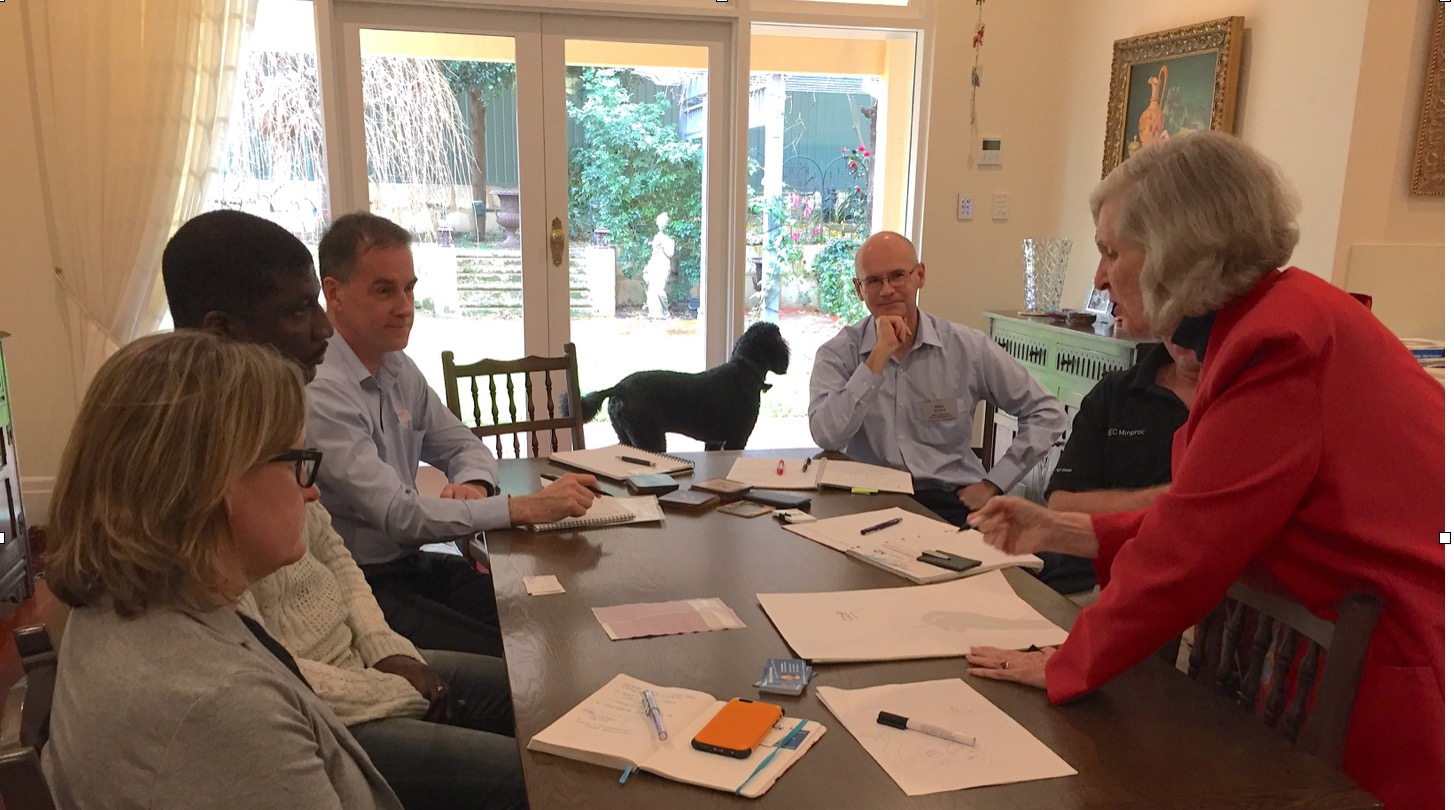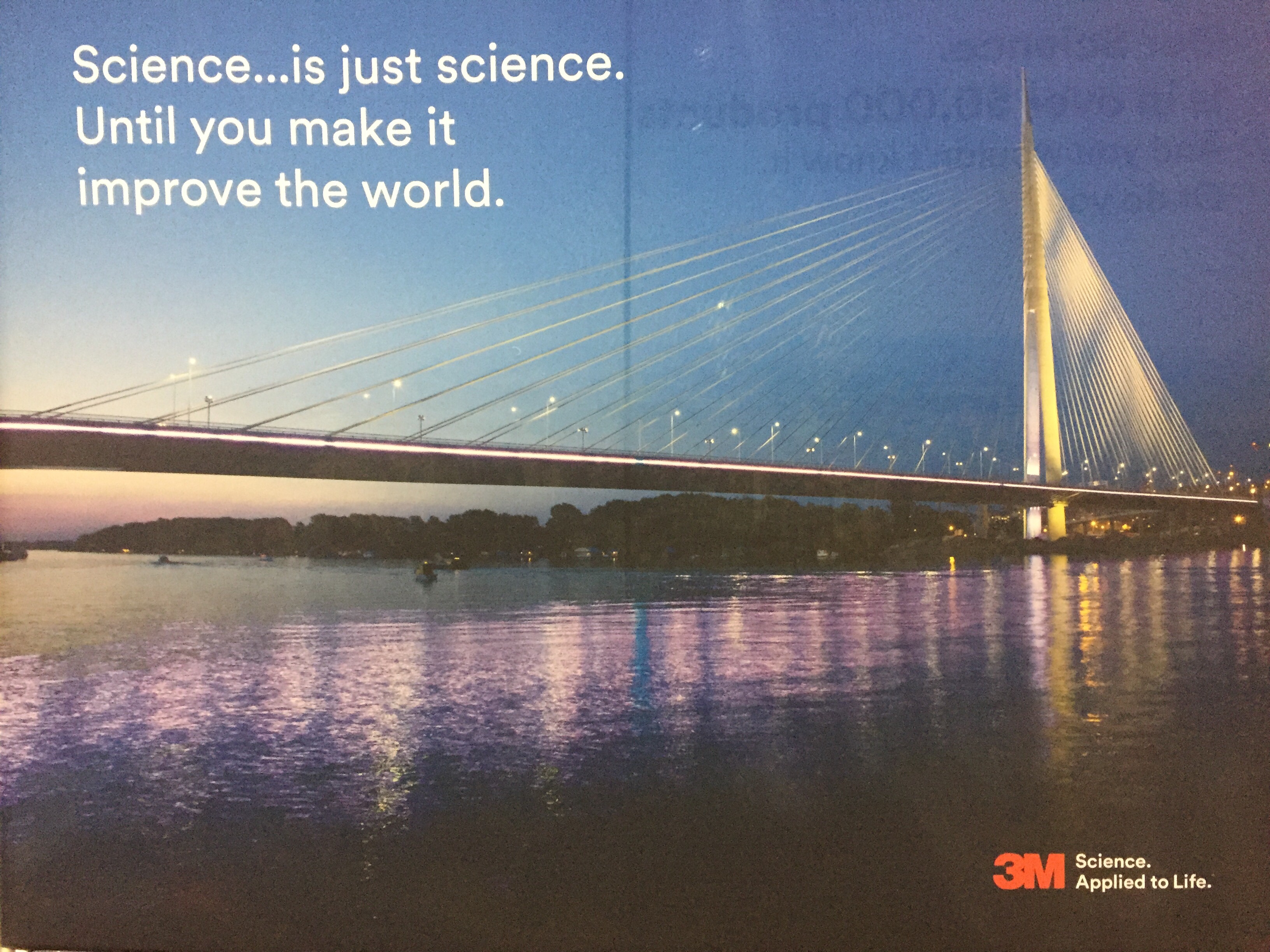Nudge theory is currently in the news and the next few posts examine aspects of it that are relevant to infrastructure decision making. Have you had any experience with ‘nudging’? What are your thoughts on the subject?

Back in the day!
In 2010 Richard Thaler (the 2017 Nobel Economics Prize winner) and his co-author, Cass Sunstein, wrote “Nudge Theory”. The idea behind nudge theory is that the brain is lazy, or rather that we have so many decisions to make every day, that where there is an easy way out, we are likely to take it. Governments around the world have established ‘nudge’ units to figure out how to encourage (yet not force) people to take decisions that are in their, or the community, interest. The most popular of the approaches is to make the beneficial decision the ‘default’ option. For example, making organ donation the default standard but allowing people to opt out, generates significantly highly numbers of organ donors than where the default is out, but people are allowed to ‘opt in’. This relies on us defaulting to the ‘easy option’, the one that requires the least effort, the least thought.
When it comes to infrastructure decision making, this means that we are more likely to choose options with which we are familiar, rather than ones that require effort, exploration, thought, and time. In other words, although we know that the world is rapidly and radically changing with technology providing far more options than we have had in the past, we will (being human) have a tendency to default to the infrastructure that we have built in the past. This means that we have an inbuilt tendency to construct infrastructure better suited to the 20th, rather than the 21st, century.
Question: How can we use nudge theory to work in our favour, rather than against?
Hein Aucamp, Perth City Chapter, submitted this as a comment to the last post but I think it contains ideas that are important enough to warrant a post of its own. Hope you all agree. Penny
 Silo! We use this word to indicate a situation in which efficiency and conclusions are impaired because cloistering prevents us from including all the required factors.
Silo! We use this word to indicate a situation in which efficiency and conclusions are impaired because cloistering prevents us from including all the required factors.
If you stand at the top of a silo and look down inside, you see a tiny horizon, much smaller than the surrounding landscape.
Our manner of talking – our language and choice of vocabulary – can be revealing about our perspective. It can show how much we can see and how many relevant factors we are taking into account.
I remember being at an AIFMG training course in 2012. There was a discussion about whether a road is really an asset. From a Local Government’s point of view, why isn’t a road considered a liability? After all, it requires effort and expenditure, it must be maintained, and it must be replaced. Should it really be called an asset?
But from a wider perspective a useful road is definitely an asset. We can easily see this, because when it is consumed, the community wants another one. Of course an asset has associated costs; that in itself does not make it a liability. What makes it an asset is that its benefits outweigh the costs.
Now look at the dangers of the silo effect in the discussion about the road. From the limited perspective of the asset custodian it would be much easier to entertain the notion that a road is a liability. The custodian bears the burden of the effort and records the expenditure. But when we extend our horizon to include all the relevant factors and actors, we see that it is an asset.
The comparison between road and rail in the last post is an interesting case study. May I venture to say that it is always possible, by drawing a small enough perimeter, to decide that any piece of infrastructure is a liability? The perspective just needs to be small enough to exclude the funding mechanism and the benefits to the end users.
In the road vs rail example mentioned, the economist unconsciously placed a circle of reasoning around both road and rail. In the road circle, he discovered a satisfactory funding mechanism; in the rail circle, he did not. So he reached his conclusion because he was looking for local net benefits. If on the other hand he had used a horizon instead of a silo, he would have been looking for system-wide benefits.
(Admittedly, it is much harder to comprehend funding mechanisms and benefits that are outside your silo even if inside your horizon.)
Hein Aucamp hein.aucamp@waiam.com.au
 A senior economist in a State Treasury once claimed that Rail was a net cost since costs exceeded revenues. Roads, on the other hand, he said, were profit producing. I smiled and thought he was joking, but he wasn’t.
A senior economist in a State Treasury once claimed that Rail was a net cost since costs exceeded revenues. Roads, on the other hand, he said, were profit producing. I smiled and thought he was joking, but he wasn’t.
The motor vehicle licensing board was embedded within the highways department and the sum total of licence revenues, he said, exceeded road costs. Ergo, roads were profit producing. (I suspect that capital costs didn’t figure in his equation)
On this reasoning, he resisted extending the capacity of rail, despite the fact that the city roadways were excessively congested with little scope to increase road capacity and that road users benefitted when traffic was diverted to rail.
I was reminded of this when I read Milos’ comment on my earlier post “Infrastructure – damned by the language we use”. He referred to language supporting silos. And indeed it does. However, if our infrastructure decisions are to be used to support community wellbeing do we not need to move beyond silos, to take a wider, more holistic, viewpoint?
Thoughts?

The only way to get perspective is to stand back and see the big picture, to see individual problems in context, and our own problems in relation to others, as well as to history. Two states that chose to see the infrastructure challenges of their councils in such a context were Victoria and South Australia and they have led Australia in asset management activity and improvement.
Victoria
In 1997 the State department responsible for local government was faced with a problem. Three years earlier, rates had been cut by 20% and rate capping introduced. Many councils were petitioning to have the cap lifted to cope with growth and, especially, to renew ageing infrastructure. State Government officers were in a dilemma. Whilst they could recognise the need for renewal, they suspected some councils were ‘gaming’ the system – using the excuse of renewal to avoid reducing costs. They decided to go out to tender for a simple model that could tell them which councils really needed an increase, and if so, how much. Three of the largest consulting companies in Australia at the time said that they could produce such a model, but the State chose to go with a smaller concern that pointed out that the information needed for such a model to work – namely a knowledge of the age, economic life distribution, and estimated replacement cost of council asset portfolios – was simply not available. They proposed to fill this gap. Councils also needed this information to manage their assets more effectively. The result was the report ‘Facing the Renewal Challenge’ (1998, published 2000) which led and underpinned council asset management activities and State Government monitoring for over ten years.
South Australia
In the meantime, a group of large councils in South Australia who were trying to benchmark were frustrated by the lack of uniformity of data systems for asset information, accounting, valuation and condition assessment among the group. They chose to do a separate study under a common set of standards along the lines of the Victorian study and to widen their study to include all councils, small and large, urban and rural, and isolated. This study differed from the Victorian in two major ways – first, participation was voluntary (but, with a bit of persuasion, all took part!) and second, it used online information collection. With the information on the web, it then became possible for councils to do ‘what if’ analysis. (‘What if we extended the life of this set of assets, or increased the service levels of that set?’) The resulting report was ‘A Wealth of Opportunities’. The design and computer modelling undertaken then led to the development of IPWEA’s famous NAMS Plus asset management training, which is now a world wide program.
Last week in Perth, Neville Binning, WA Chapter Chair for Talking Infrastructure, and I hosted seven casual small group discussions, in which we discussed a number of infrastructure issues, the first being ‘what is the purpose of infrastructure?’ (More on this later.)

Hein Aucamp (to the right of Theodore the poodle) took part in the seventh of these sessions. Also present was Jaqueline Blenkinship, Adeyemo John Falade, Ashley McKinnon and, unfortunately obscured from view, Jacek Narozny. Curiously, Hein was the first to raise the question – what do we mean by infrastructure? Being a gentleman, he didn’t leave us guessing, but provided the following answer.
Hein Aucamp: “I used an idea from Alex Marshall’s “How Cities Work” to suggest an answer. I also realised that the answer allows us to identify whether something truly is infrastructure, or whether it merely looks like infrastructure.
This is the answer I suggested:
• Infrastructure enables transactions in the broadest sense by providing common facilities that we would not be able to afford individually.
• A transaction is where we exchange some resources for a result of greater value; infrastructure provides the framework that we don’t own to allow us to use what we do own to gain something we want.
• Infrastructure in this sense would include internet communications and even the currency in circulation in a country.
If we describe the purpose of infrastructure precisely, and we define true infrastructure as whatever serves the purpose of infrastructure, then we can know whether something actually deserves the name of infrastructure, or whether it is only apparent infrastructure created for a lesser purpose.
To adapt the words on Penny’s slide in the last post: Infrastructure… is not even infrastructure until it improves the world.”
Hein Aucamp is Director, WA Integrated Asset Management. You can reach him at hein.aucamp@waiam.com.au
OK, over to you – agree/disagree? Something to add?
 We ‘invest’ in capital, but maintenance and operations are a ‘cost’.
We ‘invest’ in capital, but maintenance and operations are a ‘cost’.
We consider Investment to be ‘good’, so we try to increase it.
We consider Costs to be ‘bad’ so we try to reduce them.
The result is that we end up with infrastructure that we under-maintain and where operations are compromised by insufficient training and funding.
Because of the language we use!
Solutions?
 Edward de Bono wrote much. His book, Simplicity, I think is very appropriate to apply to asset management and KPI decision making. The part that resonated with me is the difference between simple and simplistic.
Edward de Bono wrote much. His book, Simplicity, I think is very appropriate to apply to asset management and KPI decision making. The part that resonated with me is the difference between simple and simplistic.
In Infrastructure decision making a simple model is a great thing, a simplistic model is a destructive and dangerous thing. This is true in all fields, engineering, economic and social included. Simplistic by definition is overly simple. Unfortunately many of out decision makers have a simplistic understanding of both the English language and the role of infrastructure. You will hear many people calling for a more simplistic solution or approach. They mean “simple”, but one doubts whether the inability to differentiate between simplistic and simple translates into the making of sound decisions.
Regardless, satisfaction surveys, mandated bureaucratic KPIs, single-digit comparisons to like organisations and other such endeavors are simplistic management techniques. They have been over-simplified and are as a consequence of no value.
Simplicity before understanding is simplistic; simplicity after understanding is simple.
– Edward De Bono
Simplistic decisions are tolerated and often demanded by our populations. I believe this is because the general public has little understanding of the complexities of the modern world, and no desire to embrace that understanding. While the situations and decisions can be presented simply by our leaders, there is no political advantage in straying from binary arguments, right and wrong, black and white. The issue here is to help people understand that complex arguments about infrastructure can be presented simply, and be debated on their merits. With this understanding, the people can call for rational debate, not simplistic decision making. As professionals in our fields we can assist by presenting our work as simply as possible and resisting pressure to make our work simplistic.
Question for the day:
What techniques do you use, or know of, that help you to determine whether your reasoning is ‘simple’ or ‘simplistic’?

Managing the media is a fine balancing act
Without buying into any nonsense about ‘fake’ news, we do know that the media has a hard time coming to grips with infrastructure issues and presenting them clearly to their readers. This is true, even when the journalists are not seeking the sensational.
Take the following example. In 2005, the City of Toronto faced a sudden $60M hole in its budget when the Province reduced its funding at short notice. It made a deal with Toronto Hydro, a wholly owned trading enterprise of the City, to buy its street lights for $60 M and lease them back to the City. The contract details, when released, showed that the City had agreed to pay $13.6 M a year to lease back the lights. The Press had field day and the Council went on the defensive. (Additional fact: The City tried to block the release of the contract and it took 5 years for a Freedom of Information request to produce the information requested.)
The news story about Toronto City Council selling off its street lights and leasing them back put the City Councillors on the back foot, fending off public criticism of the “rip-off”. On the face of it, you can see why the public were angry when the figures were stated baldly as selling off for $60M and paying close to $420M over the next 30 years to lease them back.
So today, two questions
- Was this a fair comparison? Are these figures really comparable? Anticipating media reaction, what extra information would you have required, what questions would you have asked – and potentially discussed in a media release? How would you have handled this situation? What would you have advised the Toronto City Council to do?
- Or, What have you learned from media storms like this that you could pass on to others, ways of ensuring readers could potentially get a better understanding of what is really happening?
A Question
 Ben Lawson’s response to the post “I measure therefore I manage” (do read it!) reminded me of a question I have recently been asking myself – What’s the difference between ‘populism’ and ‘community participation’? Is it, for example, the difference between uninformed (and often knee-jerk) reaction and informed and considered judgement? And, if so, what can we do to lift the level of informed response?
Ben Lawson’s response to the post “I measure therefore I manage” (do read it!) reminded me of a question I have recently been asking myself – What’s the difference between ‘populism’ and ‘community participation’? Is it, for example, the difference between uninformed (and often knee-jerk) reaction and informed and considered judgement? And, if so, what can we do to lift the level of informed response?
Good and Bad Practice
Back when I was writing “Strategic Asset Management” it was my job to note both good and bad practices in the measurement of community satisfaction. The clue? Good practices stepped themselves out from the pack by the amount of real understanding of the problem that they generated (both the costs and the consequences).
Citizen Juries
One example was the use of Citizen Juries, such as the exercise in Boroondara where a representative sample (about 20) of the citizenry were engaged (and paid!) to learn over a period of six weeks about the issues and the options facing the city and then – as informed citizens – to give their considered opinions. It is notable that the City then implemented those decisions, and the jury members were the strongest advocates for both the City and the Council.
Sydney Opera House
A smaller example was the decision to replace the broken flagstones in the courtyard of the Opera House. The question was ‘should all cracked flagstones be replaced or only those that were major problems?’ Three costings were developed according to the degree of replacement and pictures were provided of both the current situation and what the final result would look like for each option. Then local visitors (i.e. those that would be taxed to pay for it) were polled to see what level they supported. With both the costs and the consequences in evidence, those polled voted for a moderate degree of renewal, not the most expensive. You can see that good practice asked specific questions and provided both costs and consequences.
Poor practice?
Current local government ‘satisfaction surveys’ on the other hand ask general questions and provide neither costs nor consequences.
How would you prefer that decisions on your rates and taxes be determined?


Recent Comments